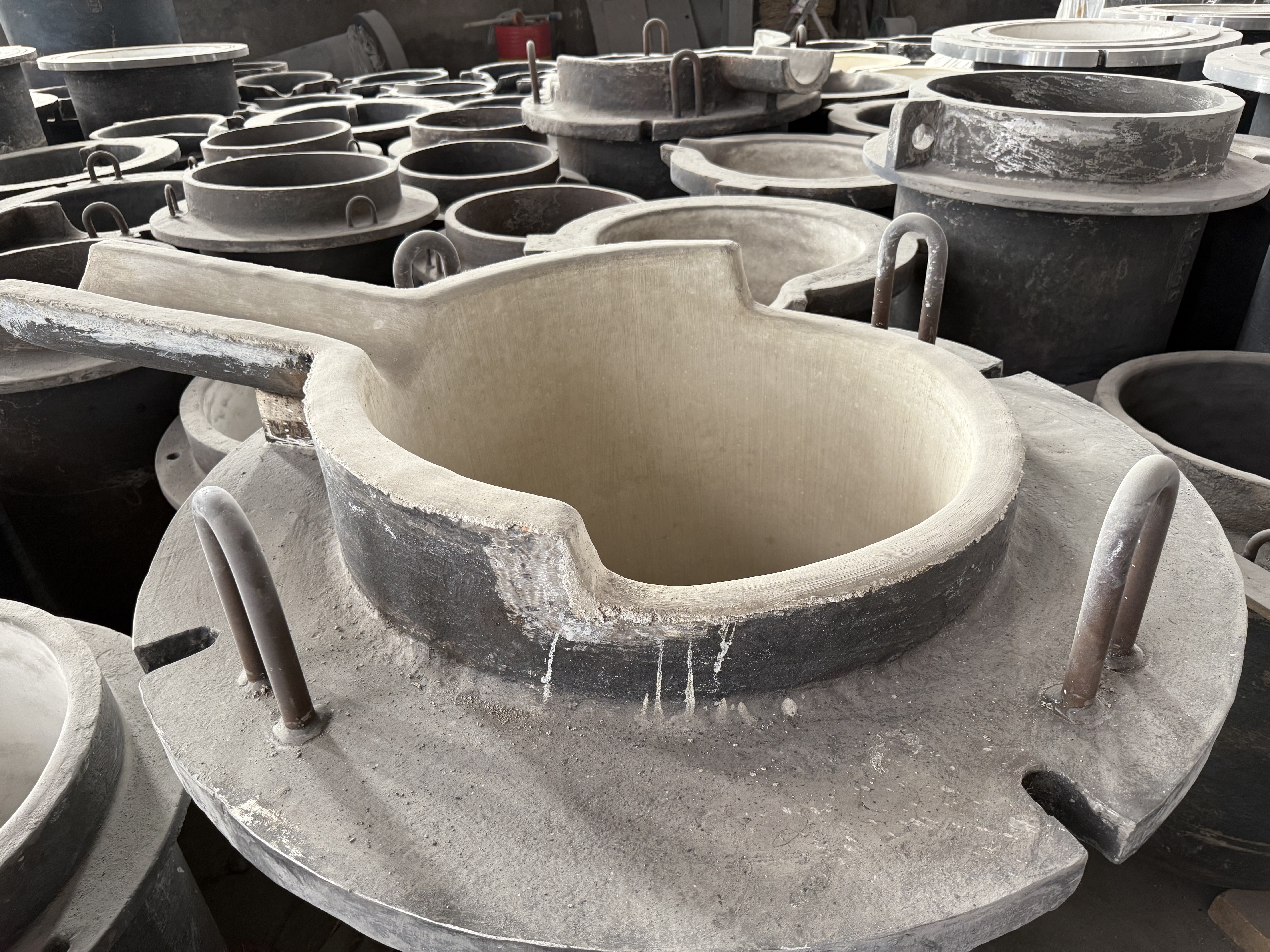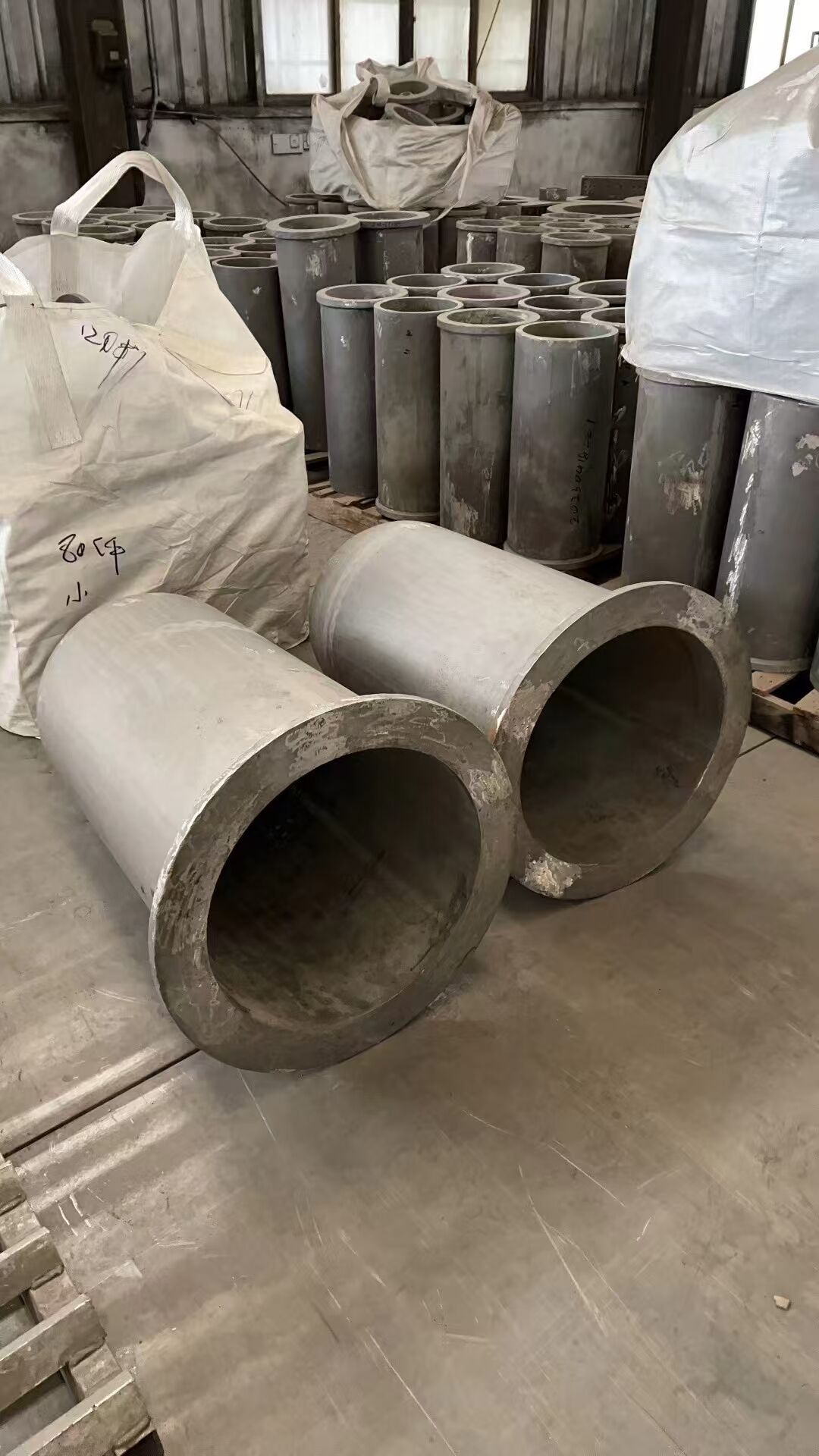Understanding Crucibles in Metal Casting
Definition and Function of Crucibles
Crucibles serve as those important vessels that hold metals while they're heated to blistering temperatures during casting operations. Most often made from stuff like ceramic, clay, or graphite because these materials can handle the severe temperature changes without cracking apart. The main job of a crucible is keeping the metal clean throughout the whole process so nothing gets mixed in or contaminated by whatever happens when metal starts to melt down. When working with different types of metal - think aluminum, gold, silver, even iron - the right kind of crucible matters a lot. Take graphite for example; it works best for metals needing really hot conditions since it handles extreme heat better than other options. Using the correct material makes all the difference in getting consistent results and purer metal output. And let's face it, cleaner metal means fewer headaches for factory workers dealing with impurities later on.
Direct Melting Process Explained
Direct melting works by applying heat straight to metal through either a flame or electric current. This approach cuts down on setup time and gets things melted much quicker than other methods. Small workshops and individual metalworkers often prefer this technique because it doesn't require expensive equipment and runs efficiently even on tight budgets. But there's one big catch nobody wants to ignore temperature fluctuations during the melt. If operators let the heat get too hot or too cold at any point, the whole batch could end up defective. So while direct melting saves money and time, experienced workers know they need to keep a close eye on those furnace readings and make adjustments as needed throughout the entire process to maintain quality control.
Ideal Scenarios for Crucible Usage
Small to medium scale casting operations find crucibles particularly useful when fast turnaround between batches matters most. Artisan metalworkers and jewelry makers especially appreciate them because they allow tight control over exotic metals and custom alloy blends. These vessels give just enough room to experiment while still getting things done efficiently. For R&D labs too, crucibles have become essential tools thanks to how quickly they transfer heat through the material. Scientists can run multiple tests on new alloy combinations without waiting ages for each sample to reach temperature. The consistent results make it easier to spot promising material innovations during development phases.

Exploring Furnaces for Metal Casting
How Furnaces Heat Metal Indirectly
Most furnaces work with indirect heating techniques. Basically, they generate heat either through burning fuel or using electric elements, then pass that heat along to metals via convection, radiation, or good old fashioned conduction. What makes this setup so effective? Well, it helps spread out the temperature evenly across big batches of metal something that matters a lot when we're talking about industrial scale operations where everything needs to be consistent. Another advantage lies in furnace design itself. These systems are built to keep outside contaminants at bay, which means better quality molten metal and ultimately cleaner finished products coming off the line. For manufacturers working with complicated alloy mixes in their mass production runs, sticking with indirect heating remains essential to preserving material properties throughout the process.
Industrial-Scale Temperature Consistency
Industrial furnaces are built with great care to keep temperatures steady when melting metals on a large scale, avoiding those annoying ups and downs that mess up production. The modern ones come equipped with fancy control systems plus good insulation to save energy while getting more done in less time. According to some recent research in manufacturing circles, companies using these upgraded furnaces often see their electricity bills drop by quite a bit, along with faster output rates. That's why factories dealing with tons of metal processing rely so heavily on them. They just make sense for anyone looking to melt stuff consistently without wasting power or money.
When to Opt for Furnace Systems
When it comes to big manufacturing setups needing lots of output, furnace systems generally make more sense than other options because they cut costs per unit produced. These systems work really well in sectors such as car manufacturing and aircraft parts production, where getting consistent results from batch to batch matters a lot for safety reasons. Another reason many plants go with furnaces instead of crucibles is that they handle different types of metal melting better. The flexibility of furnace systems lets manufacturers switch between various heat treatments and alloy combinations without major equipment changes. For shops dealing with multiple customer specs or regulatory requirements across different materials, this kind of operational flexibility becomes pretty valuable over time.
Crucible vs. Furnace: Core Differences
Direct vs. Indirect Heating Mechanisms
Heating stuff up works differently depending on whether we're talking about crucibles or furnaces. Crucibles go straight at it with direct heating from something like an open flame right against the material itself, which melts things pretty fast. The downside? Getting even temperatures throughout can be tricky sometimes. On the other hand, furnaces take a different route altogether. They rely on indirect heating through things like hot air circulation, radiant heat, or just letting the heat spread naturally. This means less variation in temperature across whatever's being heated inside. That makes all the difference when dealing with bigger batches where consistency matters most. Looking at both options, efficiency, safety concerns, and how well they scale up are important considerations. Most shops will opt for furnaces when they need to produce consistently good results in bulk quantities because of that even heating factor. But if someone just needs to melt a small amount quickly without worrying too much about perfect temperature control, then a simple crucible setup often gets the job done just fine.
Portability and Scale Comparisons
When it comes down to picking between crucibles and furnaces, portability and scale matter a lot. Crucibles tend to be much easier to move around and generally cheaper too, which makes them great for those little workshops or artists who need something that doesn't take up half the garage. Artisans can literally pick these things up and relocate them whenever necessary without breaking the bank. On the flip side, furnaces just aren't built for moving around because they're so big and need special installations. Still, nobody can deny how essential furnaces become once production ramps up beyond what any crucible could handle. Most makers find themselves at a crossroads based purely on how much stuff they actually need to produce each day. Small batches work fine with crucibles, but anyone running serious manufacturing operations knows furnaces are basically non-negotiable if they want to keep meeting those monthly quotas consistently.
Control Flexibility and Precision
When it comes to control and precision, crucibles and furnaces really stand apart from each other in how they work. Crucibles let people handle the melting process manually, something many jewelers and metalworkers appreciate when making detailed pieces or working with special alloys. The hands-on nature means artists can adjust things as needed throughout the process to get exactly what they want in the final piece. Furnaces tell a different story though. They come packed with automated controls and programmable settings that make mass production possible without much variation between batches. For manufacturers who need to hit tight quality specs every single time, these machines are basically essential. Most shop owners will tell you that consistency matters most in large scale operations, which is why so many factories have switched to furnace systems for their day to day production needs.
Selecting the Right Metal Casting Tools
Evaluating Production Volume Requirements
The right metal casting tool depends mostly on how much stuff needs to be made at once. For smaller runs, crucibles work just fine and are what most crafters and little shops use when they don't need tons of pieces all at once. Big operations tell a different story though. Industrial furnaces handle massive production because they can run nonstop and melt way more material between batches. Looking at numbers like daily output targets helps figure out what kind of gear makes sense for a workshop or factory floor. Most manufacturers check what other companies in similar industries typically produce before deciding which tools fit best. Getting this right matters beyond just picking equipment. Knowing exactly how many parts need casting each week actually affects how smooth everything runs day to day and whether a business can grow without constantly breaking down machines trying to keep up.
Material Compatibility Considerations
When picking out casting tools like crucibles or furnaces, material compatibility should be at the top of the list. Different metals have their own characteristics that demand particular setups for good results. Getting the right melting temps is just part of it; there's also the matter of keeping things clean during processing while getting the most out of each operation cycle. If the metal doesn't match well with whatever tooling is being used, that shows up in the finished product quality. Manufacturers spend time studying what works best with different metals because this knowledge makes all the difference. Knowing about these factors helps shops avoid costly mistakes and produce better goods consistently over time.
Workspace and Mobility Factors
Looking at workspace size and mobility requirements really matters when picking out metal casting gear. Workshops that don't have much room often find compact crucible systems work best for them since these take up less floor space while still getting the job done right. Some shops need equipment they can move around too, so portable crucibles become the go-to option for jobs that require casting on location. The market shows interesting patterns about how different manufacturers arrange their casting areas to maximize productivity. For instance, many small foundries now design their spaces with modular components that can be rearranged as needed. When companies think through how their physical space works and what kind of movement their operations demand, they end up choosing equipment that fits better in the short term and scales well for whatever comes next. This approach helps strike that sweet spot where things run smoothly day to day but also allow adaptation when business conditions change.
Specialized Applications and Use Cases
Crucibles for Small-Batch & Specialty Casting
Crucibles serve as essential equipment for crafters and tiny manufacturing shops working on limited runs or special projects. What makes these containers so useful is how they give makers the control needed to produce complex shapes and patterns, which explains why jewelers depend on them so much. The way crucibles handle temperature changes quickly means better results when casting metals into detailed forms. Many independent artists find that incorporating crucibles into their workflow really pays off, especially when trying to preserve what makes their work stand out from mass-produced items available everywhere else.
Furnaces in High-Volume Industrial Settings
In industrial casting operations, furnaces are absolutely vital for handling the massive volumes required by production lines that need fast turnaround. These systems can melt tons of metal at once, which is why foundries across sectors like car manufacturing, aircraft parts production, and building materials rely on them so heavily. Modern furnace designs focus on maximizing output while keeping energy consumption down, something that translates directly into lower operating expenses for plant managers. Most shops will tell you that getting the right furnace setup makes all the difference when trying to hit those monthly production targets without breaking the bank on fuel costs alone.
Hybrid Approaches: Combining Both Systems
A lot of manufacturing sectors have started mixing crucible work with furnace operations to cover all sorts of production scenarios. Combining these methods gives shops better overall efficiency without losing the capability to tackle those tricky custom orders that require exact measurements and special handling. When manufacturers know when to switch between different systems based on what's needed for each job, they run smoother day to day. Take metal casting shops for instance many have reported significant improvements after setting up this dual approach. They get more done faster because they aren't stuck with one method when another would be better suited for certain tasks, especially when dealing with complicated castings that need multiple steps.
Implementation Insights and Best Practices
Safety Protocols for Handling Molten Metal
Safety rules around molten metal work need to be taken seriously if we want to keep workers safe from accidents at the shop floor. Workers should definitely wear proper gear like those thick heat resistant gloves, face shields that won't melt, and full body protection against splashes. Nobody wants to get burned just because they skipped putting on their PPE. Regular training sessions about equipment operation and emergency response plans matter just as much as the physical protection. Most shops follow standards set by groups like OSHA, which actually has pretty good stuff on paper for keeping things running safely when working with hot metals. These guidelines aren't just bureaucratic nonsense either they really do help prevent disasters when metal starts acting up unexpectedly.
Maintenance Guidelines for Longevity
Keeping crucibles and furnaces well maintained really makes a difference in how long they last and how efficiently operations run day to day. Most facilities find it works best when they set up regular cleaning routines, check equipment at scheduled intervals, and store items properly between uses to avoid damage or contamination issues. When companies stick to these basic maintenance rules, they tend to save money in the long run because there's less unexpected downtime and equipment failures become much less frequent. Industry data shows plants that follow consistent maintenance schedules typically see around 30% reduction in repair costs compared to those that don't. The bottom line? Good maintenance isn't just about following procedures it's about making smart investments that pay off over time.
Optimizing Energy Efficiency
Improving how much energy metal casting shops use helps cut down both money spent and bad effects on nature. When factories put in newer stuff like better insulation around furnaces or automatic systems to control heat, they tend to save quite a bit of power. Look at what happened at several manufacturing plants where workers upgraded their equipment - some saved thousands each month just by making smarter choices about energy use. Saving energy makes financial sense obviously, but it also fits right into today's push for greener manufacturing practices across industries.
FAQs on Crucibles and Metal Casting
What materials are commonly used to make crucibles?
Crucibles are often made from ceramics, clay, or graphite, as these materials can withstand the high temperatures and thermal shock during metal casting.
Why is direct melting beneficial for small-scale operations?
Direct melting is cost-effective and efficient, making it ideal for smaller operations. However, temperature monitoring is crucial to ensure product quality.
How do I choose between a crucible and a furnace for my operation?
Consider your production volume, material compatibility, and workspace mobility needs. Crucibles are suitable for smaller batches while furnaces excel in industrial-scale productions.
What are the benefits of combining crucibles and furnaces?
A hybrid system allows for greater flexibility and efficiency, accommodating custom jobs while ensuring large-scale production capabilities.


